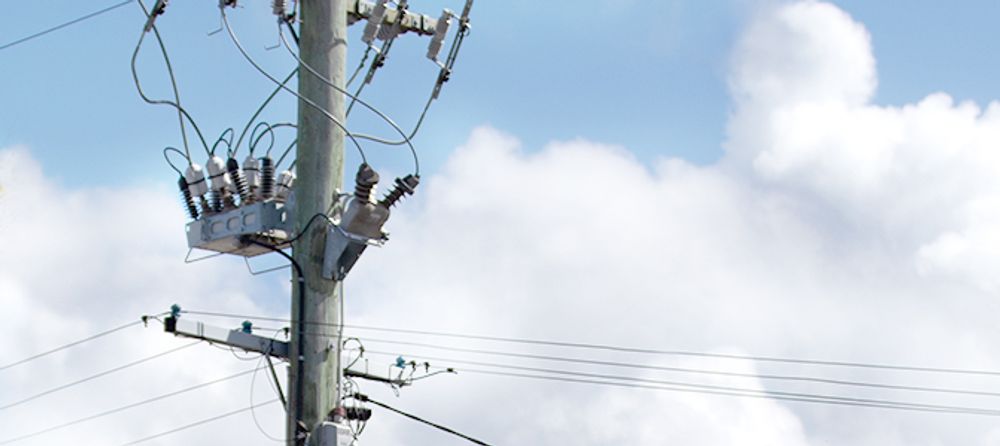Technical Article
Updated 08/2024
Can Surge Arrestors be Directly Earthed through a Recloser?
The results of an empirical study

Lightning surges are inevitable for outdoor equipment in a pole mounted environment, but for most of this equipment Surge Arrestors can be used to vastly mitigate the risk of equipment damage.
Surge arrestors operate as non-linear impedance devices, where their impedance falls greatly above a predetermined voltage level. They act similarly to a pressure relief valve. When the electrical pressure gets too high, they begin conducting to ground, reducing the voltage (electrical pressure).
Once the electrical overpressure dissipates and voltages return to normal ranges, the surge arrestor stops conducting, returning the system to it’s original configuration.
Most surge arrestors can survive multiple overvoltage dissipation events before needing replacement.
For NOJA Power OSM Reclosers, the mounting position, and surge circuit pathway, is to travel directly through the metal of the tank. All OSM Reclosers are powder coated stainless steel, but the surge arrestor mounting position is masked off prior to powder coating to ensure an effective bond between the surge arrestor and the recloser tank.
Some switchgear is not designed to be used as an earth path for surge arrestors, which then mandates additional copper bar-work or wiring to connect the surge arrestor to the pole earth. This is not the case with the OSM Recloser, however the question remains,
How well does the Recloser Tank perform as an earth path, in comparison to external copper earthing?
For NOJA Power, whilst the design of the recloser originally accounted for the use of the tank as the earth path, its an interesting exercise to compare the performance of the tank as an earth path versus a simple copper bar.
The test procedure is:
- Apply a surge to the standard arrestor connecting point, and measure the waveform
- Apply a surge to the arrestor connecting point, but include an additional copper bar as the earth path, electrically in parallel with the tank earthing method.
- Compare results


The resulting graph shows both earth paths share almost the exact same transient response, implying that both earth paths are equally effective.
However, earthing through the tank is much cheaper.

From a physics perspective, the design of the tank ensures that the large cross section of the conductor (i.e. the entire surface of the tank) accounts for the difference in material.
While the same dimension of copper bar and stainless steel bar would have different impedances, in this case, the current carrying area of stainless steel is vastly larger than the copper bar, resulting in equivalent performance.
“Surge arresters are a relatively small investment to protect the utilities investment in the recloser asset and we encourage the use and installation of surge arresters on all six bushings on every device installed,” says NOJA Power Group Managing Director Neil O'Sullivan.
“This testing has confirmed the surge arrester can be directly mounted to the recloser tank and earthed through the tank and this is NOJA Power recommended installation practice.”
Earthing surge arrestors directly onto NOJA Power OSM Reclosers is equivalent in performance to external copper bars, but saves utilities money in installation. NOJA Power’s product design philosophy is to integrate everything a utility needs for a Recloser installation, saving on installation, commissioning and design. To find out more about NOJA Power’s OSM Reclosers, visit www.nojapower.com.au or contact your local NOJA Power Distributor.
Want to stay up to date with Electrical Distribution Technology?
Join our list for a free weekly technical bulletin, as we share our Global Electrical Engineering experience directly to your inbox.
Subscribe →